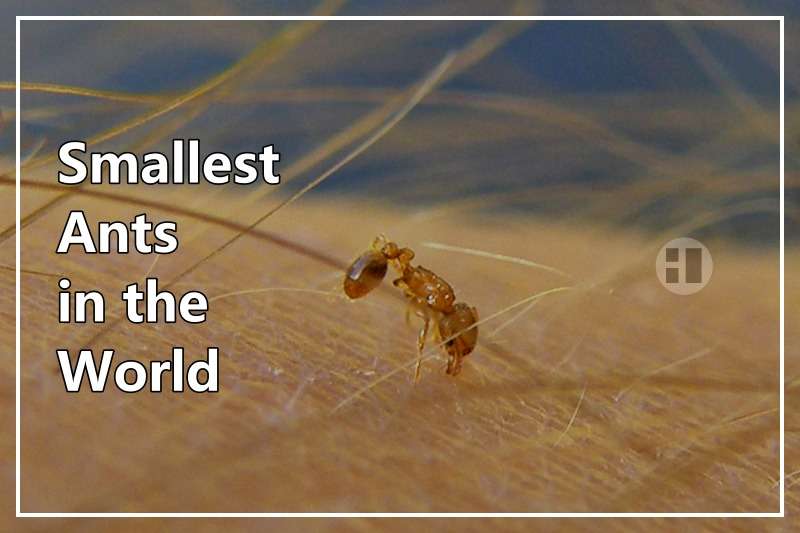One of the most fascinating and varied groups of animals is the ant. These insects never cease to amaze me with their complex social systems, formidable physical abilities, and amazing speed and agility. Yet not every species of ant is the same size. Some types of ants are so little that they are almost invisible to the naked eye.
This article provides a list and brief descriptions of the Top 15 of the world’s smallest ants. These tiny ants represent numerous different genera, and they are found everywhere from the rainforests of South America to the deserts of Australia. Although these ants are smaller than others, it is remarkable how well they have adapted to their environments.
Top 15 Smallest Ants in the World
15. Banded Sugar Ants
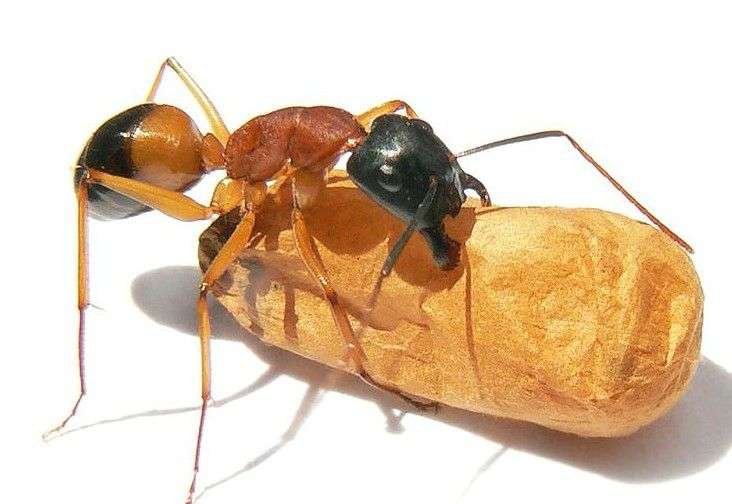
| Scientific Name | Camponotus consobrinus |
| Size | 4 to 16 mm |
| Color | Black with orange-brown bands |
| Location | Eastern Australia |
Banded sugar ants are primarily nocturnal, prefer a mesic environment, and are frequently seen in forests and woodlands. They can be found in cities as well, where people consider them to be a pest.
The ant’s diet consists of the sweet secretions it harvests from the aphids and other insects it tends. By spraying formic acid on insects, workers prey on them. Birds, echidnas, and other ants all prey on banded sugar ants.
Indigenous Australians consumed the eggs of this species. The polymorphic-banded sugar ants have two different sizes of workers in each colony: minor workers and major workers.
The workers are smaller and more slender, while the soldiers are bigger and more robust, making it easy to distinguish between the two castes.
14) European Fire Ant
| Scientific Name | Myrmica sp. |
| Size | 4-5 mm |
| Color | Brown or black |
| Location | Found throughout the world, except for Antarctica |
Other Myrmica species that are able to infiltrate the nest of their host include a number of inquiline species (commensal symbionts) in this genus.
They then manipulate the host colony using hormones so that parasite brood develop into sexuals and host queen’s eggs hatch into workers.
Because of this, the parasite depends on the resources of the host to support its own colony. Around 200 species and subspecies of the genus are currently recognised, though this number is likely to increase once the Chinese and Nearctic fauna lists are updated.
13) Saint Valentine Ant
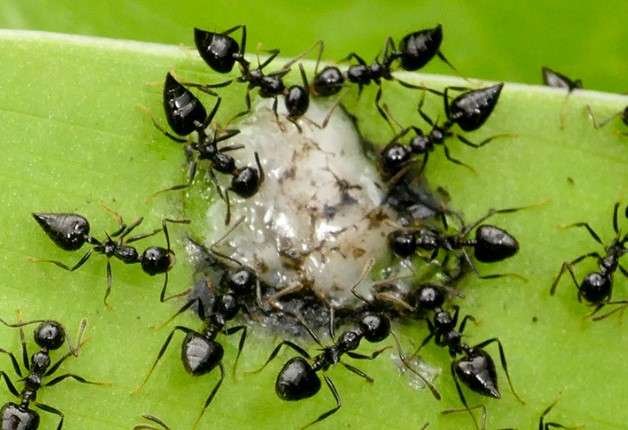
| Scientific Name | Crematogaster sp. |
| Size | 3-5mm |
| Color | Brown or black or yellow |
| Location | Canada, USA, and Mexico |
An ecologically diverse genus of ants known as Crematogaster is widespread throughout the world. They are distinguished by an unusually heart-shaped gaster (abdomen), which gives them the nickname “Saint Valentine ant.”
The main way that acrobat ants get their food is by eating other insects like wasps. They stun their prey with venom, and they guide their allies to food sources by creating intricate trails.
Crematogaster species procreate through nuptial flights, where the queen gathers the sperm needed to fertilize each egg she lays for the rest of her life.
12. Black Garden Ant

| Scientific Name | Lasius niger |
| Size | 3-5mm |
| Color | Black or dark brown |
| Location | Throughout Europe and North America, also found in parts of Asia and Africa |
Lasius niger colonies typically have between 4,000 and 7,000 workers, but they occasionally grow to 40,000. The longest recorded lifespan for any eusocial insect belongs to the Lasius niger queen, which can live for up to 29 years.
When the Lasius niger nest is first established, two to three other queens may be present.
They will put up with each other until the first workers arrive, at which point they will probably start fighting until only one queen is left. Workers can survive for at least four years in a lab setting.
11. Argentine Ant
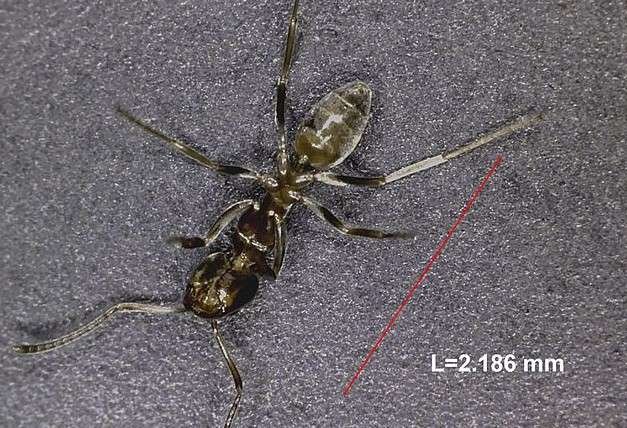
| Scientific Name | Linepithema humile |
| Size | 2.1 to 3.2mm |
| Color | Light to dark brown |
| Location | Native to South America, now found on every continent except Antarctica |
When it comes to preferred nesting locations, Argentine ants are opportunistic. Colony nests have been discovered in the ground, in crevices in concrete walls, between boards and timbers, and even among household items.
Due to their limited capacity to dig deeper nests, they typically build shallow nests in natural settings, either beneath small stones or in loose leaf litter.
However, Argentine ant colonies will quickly take over the space if a species of ant that nests deeper abandons its nest.
The colonies of this species are extremely sensitive to water infiltration because their natural habitat is within riparian floodplains. If their nests are inundated with water, workers will gather the brood and the entire colony will move to dry ground.
10. Small Honey Ant
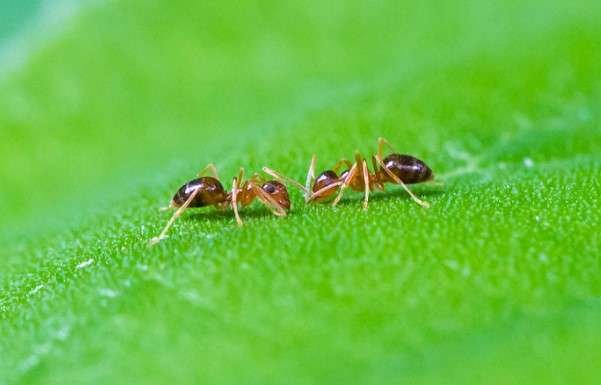
| Scientific Name | Prenolepis imparis |
| Size | 2-4mm |
| Color | Brownish-black |
| Location | North America, Australia, Singapore, Malaysia and Indonesia |
Workers of small honey ants are monomorphic. Their bodies are shiny and smooth and range in color from dark brown to black.
These ants can build nests indoors but frequently enter homes from the outside. Their nests may be found in the ground around slab expansion joints.
Potted plants have been used to collect entire colonies. Honey ants that are small and persistent forage along trails. Cakes, breads, fruits, meats, syrup, honey, sugar, and other common household foods are just a few of the things they contaminate and feed on.
By gnawing into flower buds and other soft tissue to obtain sap or juice, they harm plants like roses and oranges. They take care of treehoppers, scale insects, and aphids so they can eat their favorite food, secreted honeydew.
9. Pharaoh Ant
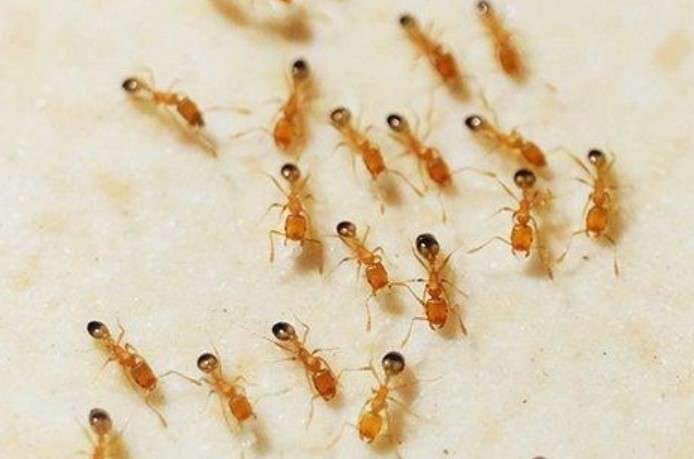
| Scientific Name | Monomorium pharaonis |
| Size | 2mm |
| Color | Yellow or light brown |
| Location | Found worldwide, particularly in temperate and tropical regions |
Due to this species’ polygyny, which results in numerous queens in each colony, caste dynamics and interactions are distinct. This enables the colony to quickly divide into bud colonies.
Although pharaoh ants are a tropical species, they can flourish almost anywhere, including temperate regions, as long as there is central heating. In her lifetime, the queen of the pharaoh ant can lay hundreds of eggs.
In the early stages of egg production, the majority lay 10 to 12 eggs per batch, but only four to seven eggs later. Eggs hatch in five to seven days at a relative humidity of 80% and a temperature of 27 °C (80 °F).
Pre-pupal period is three days, pupal period is nine days, and larval period is 18 to 19 days.
8. Strumigenys Argiola
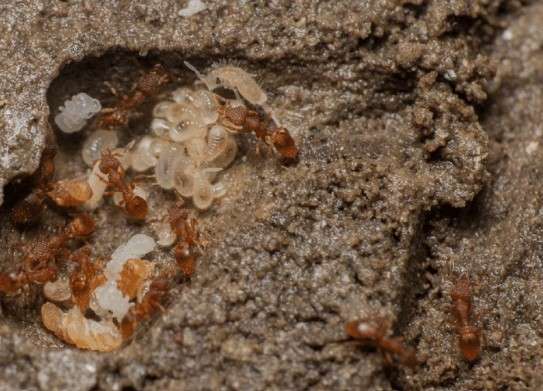
| Scientific Name | Strumigenys argiola |
| Size | 1.8-2.2mm |
| Color | Brown |
| Location | Southeast Asia, Oceania, Australia |
The other example of this species is Strumigenys ayersthey which is about 2- 4 mm long. All Afrotropical taxa have a large, strongly developed subbasal lobe on the scape, 0–2 preapical denticles, 4-6 long.
It is anteriorly directed strap-like or filiform hairs on the anterior clypeal margin, very small or absent postpetiolar spongiform lobes, relatively broad heads, and the first gastral tergite that is strongly reticulate-punctate.
7. Red Imported Fire Ant
| Scientific Name | Solenopsis invicta |
| Size | ~1.5875 mm |
| Color | Reddish-brown |
| Location | Native to South America, but invasive in many parts of the world, including the United States, Australia, and China |
These ants engage in a wide range of behaviours, including constructing rafts in anticipation of rising water levels.
They also exhibit necrophoric behavior, when members of the colony would place food waste or dead ants in garbage heaps outside the nest. Hotter days are best for foraging, though they may sleep outside in the summer.
A variety of pheromones and semiochemicals are employed by workers in their interactions with one another for purposes including but not limited to recruitment, foraging, and defense.
They have evolved mutualistic connections with hemipteran insects, which they eat with honeydew and other delicious things. Other insects, such as ants, birds, dragonflies, earwigs, and beetles, are prey for these predatory insects.
6) Odorous House Ants
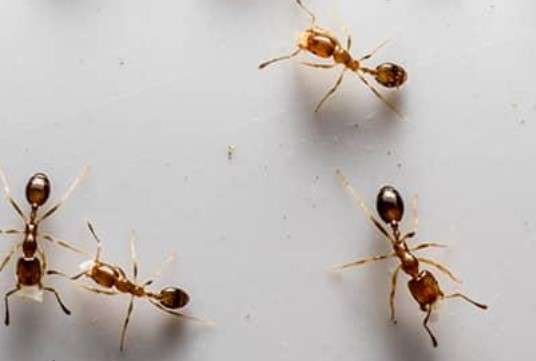
| Scientific Name | Tapinoma Sessile |
| Size | 1.5–3.2 mm |
| Color | Light to dark brown |
| Location | Found throughout North America and Europe |
Common names for the tiny Tapinoma sessile ant include odorous house ant, sugar ant, stink ant, and coconut ant. T. sessile inhabits a wide variety of environments, including those created by humans in their homes.
Ants tend and protect aphids and scale insects, which produce honeydew, which the ants then forage for, along with floral nectar and other sweet foods. They are attracted to food and water, making them a common household pest.
5) Electric Ant
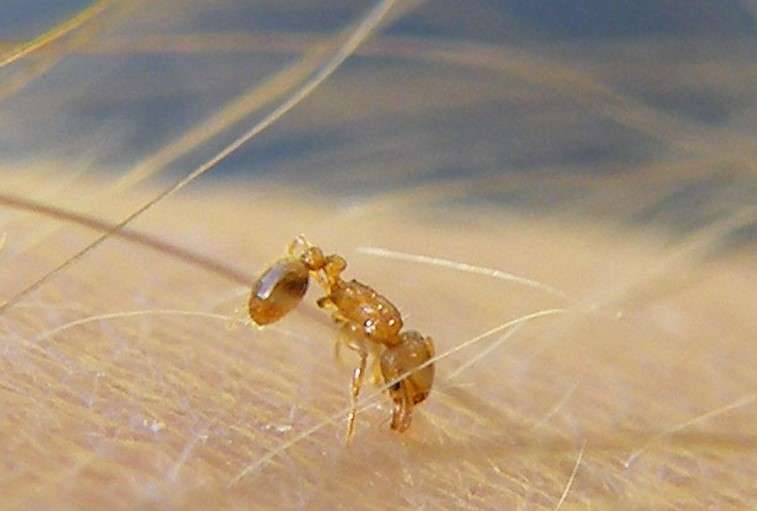
| Scientific Name | Wasmannia auropunctata |
| Size | ~1.5mm |
| Color | Reddish-brown |
| Location | Native to South and Central America, but now found in parts of Africa, Asia, Australia, and some Pacific Islands |
The little fire ant is a pest because it eats other insects, reducing their numbers, and it can kill small to medium-sized vertebrates if its colony is disturbed. When they colonise a new area, little fire ants reduce the number of different species of native ants there are there.
These ants are more competitive than their conspecifics because they feed on nectar, honeydew residues, and hideouts in vegetation, all of which are essential to the survival of other ant species.
This ant’s stings have been linked to blindness in pets and large domestic animals (including cats and dogs). The little fire ant is known as one of the most hostile alien invaders in the Galapagos.
4) Solenopsis Ant
| Scientific Name | Solenopsis sp |
| Size | 1.0 mm to over 4.0 mm |
| Color | Reddish-brown |
| Location | Native to South America, invasive in many parts of the world |
Solenopsis is a large, globally distributed genus of mostly tiny, monomorphic, and entirely underground species that presents significant taxonomic challenges. Smaller species of ants and termites frequently host these tiny species as thief ants within their colonies.
The workers of some New World species are polymorphic and the species itself tends to be larger. The workers of these species are aggressive surface foragers, and their colonies can grow to enormous sizes.
3) Ghost Ant Workers
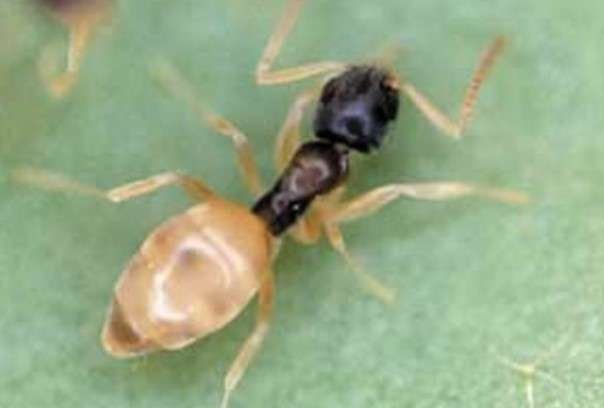
| Scientific Name | Tapinoma melanocephalum |
| Size | 1.3 to 1.5 mm |
| Color | Pale or translucent legs and gaster, dark head and thorax |
| Location | Native to tropical regions, but can be found worldwide in warm and humid areas, including parts of Asia, Africa, Australia, and the Americas. |
The top half, including the head and chest, is a deep chocolate brown to black. Light coloring can be seen on the antennae, waist (pedicel), gaster, and legs.
One rounded node at the waist, the base of the gaster, is out of sight. There is no hairy circle at the very end of the abdomen.
When these ants are crushed, they release an odour similar to that of rotting coconut, which is not pleasant. They hide in the open air beneath logs, stones, planters, and the like. While sweets are their favorite food, these ants will eat other insects if necessary.
The honeydew they collect is tended by them. As a result of their extreme thirst, they often leave a trail leading to nearby water.
2) Little Black Ant
| Scientific Name | Monomorium minimum |
| Size | 1 to 1.5 mm |
| Color | Black |
| Location | North America, South America, Asia |
As scavengers, Monomorium minimum feed on a wide variety of organic waste products, including bird poop and insect corpses.
Preying on codling moth and fall webworm larvae is one of their specialties. The workers may forage in homes, but they always nest in mounds of soil.
Honeydew from aphids like the soybean aphid is collected and used (Aphis glycines). In the middle of summer, queens and males perform the nuptial flight, where they mate while flying. Males perish quickly afterwards. E
ach queen builds a new nest, moults her wings, and begins the reproductive cycle. It takes about a month for an egg to hatch into an adult.
1) Carebara Bruni

| Scientific Name | Carebara sp. |
| Size | 0.2-0.8mm |
| Color | Light brown to dark brown |
| Location | China, Sri Lanka, Southeast Asia, including Malaysia, Thailand, Singapore |
Carebara Bruni is the world’s smallest ant with the size of 0.2 to 0.8mm in length. The ant genus Carebara belongs to the Myrmicinae subfamily. With more than 200 species found in the tropics and the Afrotropical region, it is one of the largest myrmicine genera.
Many of them are small, cryptic residents of the soil and leaf litter. There are other species of the same family like Carebara minuta (1 mm), Carebara creolei (1.2mm), Carebebara atoma (1mm) and Carebara diversa (1.3 to 2.5mm).
It is known that some species live parasitically inside termite nests. About the biology of the species, little is known. They are famous, nevertheless, for the size disparity between the queens and the workers.
Finally, ants exist in a variety of shapes and sizes, with some species being quite little. The world of microscopic ants is extensive, and their size does not always correspond to their significance in the ecosystem.
These little animals, among other things, play critical roles in soil health, seed dissemination, and pest control. Studying about the top 15 smallest ants in the world demonstrates the extraordinary adaptations that species have acquired to live and prosper in their habitats.
References:
- Wikipedia
- ants.com
- britannica.com
Also Read:

A writer who studied agriculture. Nature has always drawn me in, and my main goal in writing about it is to discover some of its secrets. You can usually find me reading Bengali and English masterpieces or filling the room with lovely music if I’m not engrossed in nature or anime material. I adore playing the guitar. I’m also that friend of yours who enjoys playing video games.
